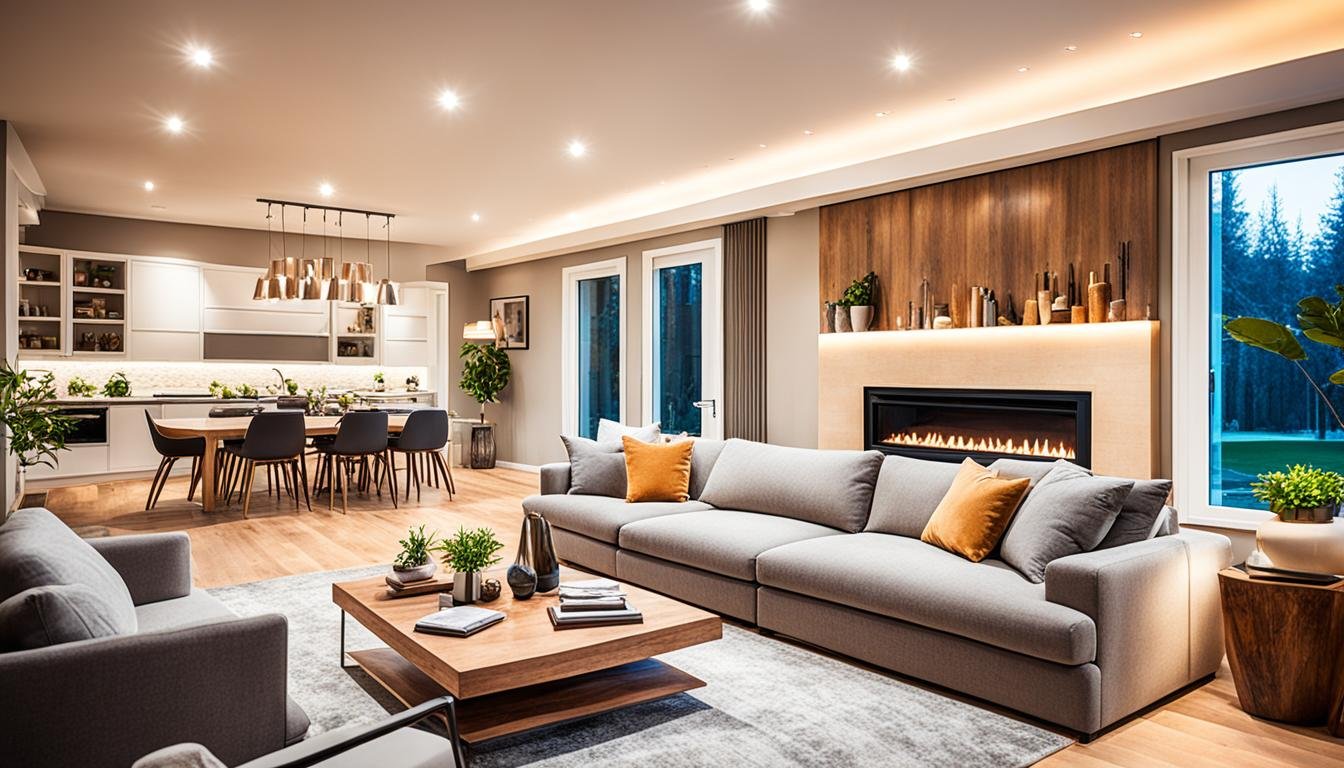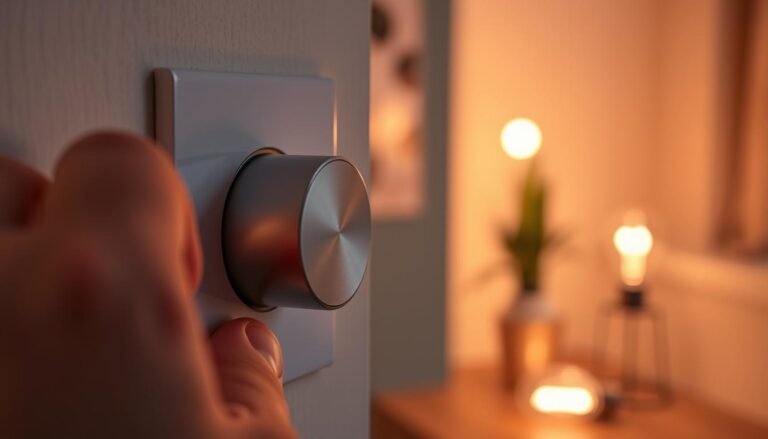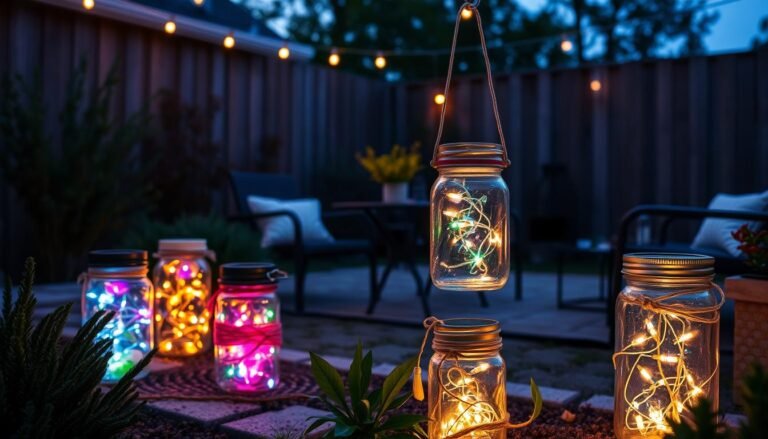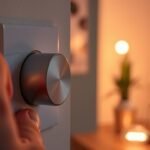Affiliate Disclosure: This post may contain affiliate links. If you make a purchase, we may earn a small commission at no extra cost to you.
In this guide, we’ll walk you through the process of choosing the right spotlights for your home. From understanding the different types and sizes of LED spotlights to selecting the appropriate color temperature, power, and brightness, we’ll cover all the essential factors you need to consider. by the end of this guide, you’ll be equipped with the knowledge to make an informed decision and find the perfect spotlights for your home.
Key Takeaways:
- Choosing the right spotlights involves understanding the different types, sizes, color temperature, power, and brightness.
- By considering these factors, you can make an informed decision and find spotlights that suit your specific needs.
- Stay tuned to learn more about selecting spotlights for your home!
Check out our FREE Calculators on our Resources Page
Spotlights: Understanding LED Types and Sizes
When it comes to LED spotlights, there are different types and sizes to choose from. To find the right spotlights for your home, it’s important to first identify your fixture needs. This includes understanding the type of fixture you have and the base type it requires.
Identifying Your Fixture Needs
To determine the appropriate LED spotlight for your fixture, consider the following:
- The type of fixture you have, such as recessed can lights, track lights, or wall-mounted fixtures. Each type of fixture may require a specific spotlight design.
- The base type your fixture uses, such as GU10, E26, or MR16. This will determine the compatibility and ease of installation for LED spotlights.
- The desired placement and angle of the spotlight within the fixture to achieve the desired illumination.
Comparing MR, BR, and PAR Bulb Types
LED spot lights come in different bulb types, each with its own advantages and uses. Here’s a comparison of the most common bulb types:
| Bulb Type | Advantages | Uses |
|---|---|---|
| MR Bulbs | Directional light output, precise beam control | Task lighting, accent lighting |
| BR Bulbs | Wide beam angle, even light distribution | General lighting, ambient lighting |
| PAR Bulbs | Variable beam angles, versatile applications | Outdoor lighting, track lighting |
Selecting the Proper Size and Form Factor
Choosing the right size and form factor for your LED spotlights is crucial to ensure they fit well into your existing fixtures and provide the desired illumination. Consider the following factors:
- The dimensions of your fixture, including the diameter and depth of the opening.
- The size and shape of the LED spotlight bulb, ensure it aligns with your fixture’s design.
- The lumen output and wattage of the spotlight bulb meet your desired brightness level and energy efficiency needs.
By understanding the different types and sizes of LED spotlights, as well as considering your fixture needs and bulb preferences, you can make an informed decision and select the spotlights that will best suit your home.
Opting for the Right Color Temperature and CRI
When choosing LED spotlights for your home, it’s crucial to consider two important factors: color temperature and Color Rendering Index (CRI). These factors play a significant role in determining the lighting color and how accurately colors are rendered under that light.
Color temperature refers to the hue of the light emitted by lights. It can range from warm (yellowish) to cool (bluish). The choice of color temperature greatly impacts the atmosphere and mood of a room. Warmer color temperatures (around 2700K-3000K) create a cozy and intimate ambiance, making them ideal for living rooms, bedrooms, and dining areas. On the other hand, cooler color temperatures (around 4000K-5000K) provide a brighter and more energetic feel, making them suitable for kitchens, offices, and task-oriented spaces.
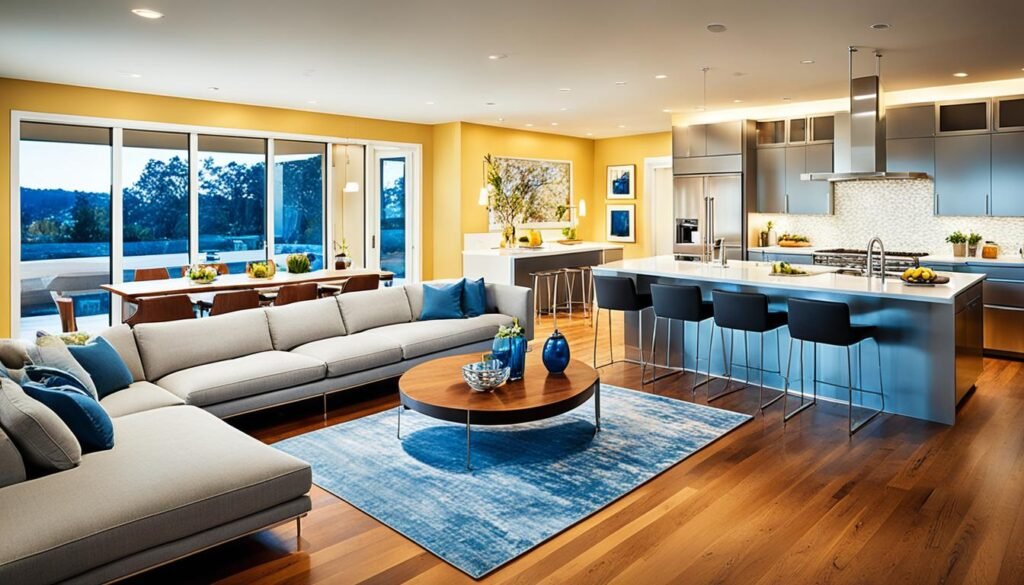
Also Read – Brighten Up With Living Room Lighting Ideas
Color Rendering Index (CRI) measures how accurately colors appear under a specific light source. It is a scale from 0 to 100, with a higher CRI indicating better color rendering. For spaces where color accuracy is important, such as art galleries or retail stores, a CRI of 90 or above is recommended. However, for general residential lighting, a CRI of 80 or above is typically sufficient.
By understanding different color temperature options and the recommended CRI, you can select lights that will create the desired ambiance and accurately highlight colors in your home. Now, let’s move on to section 4, where we’ll talk about power and brightness for optimum illumination.
Analyzing Power and Brightness for Optimum Illumination
Transitioning from Watts to Lumens
Power and brightness are crucial factors in achieving optimum illumination with LED spotlights. In the past, traditional incandescent bulbs were measured in watts, which indicated their power consumption. However, with the transition to LED technology, measuring light output based on wattage is no longer accurate.
Lights are now measured in lumens, which is a more reliable indicator of brightness. Lumens represent the total amount of light emitted by a light source, rather than the power it consumes. When comparing different LED spotlights, focusing on lumens will give you a better understanding of the light intensity they provide.
For example, a higher lumen count indicates a brighter light, while a lower lumen count produces a dimmer light. This shift to lumens allows you to choose lights based on their actual brightness rather than wattage, making it easier to find the perfect lighting solution for your needs.
How to Calculate Your Current Lighting Needs with LEDs
To determine the lighting needs for your space, it’s important to understand how to calculate the right amount of light required. Here are the steps to follow:
- Measure your space: Start by measuring the dimensions of the area you want to illuminate. Note the length, width, and height of the space.
- Determine the recommended light level: Different activities and environments require specific light levels. For example, a kitchen may require brighter lighting for tasks compared to a living room where ambient and accent lighting are more important. Research the recommended light levels for your intended space.
- Calculate the required lumens: Use the following formula to calculate the total lumens needed: Total Lumens = Area (in square feet) x Recommended Lumen Level (per square foot)
- Select the appropriate LED spotlights: Once you have the calculated total lumens, you can choose lights that provide the desired brightness. Consider the lumen output of the spotlights you’re interested in to ensure they meet or exceed the required lumens for your space.
By understanding the transition from watts to lumens and how to calculate your current lighting needs with LEDs, you can accurately choose lights that provide the right amount of light for your space. With the ability to measure brightness in lumens, you have a more precise way of achieving optimum illumination and enhancing the overall ambiance of your home.
The Impact of Beam Angle in Spot Lighting
The beam angle of LED spotlights plays a significant role in the distribution of light. A narrow beam angle concentrates the light into a smaller area, while a wide beam angle disperses the light over a larger area. Understanding the impact of beam angle can help you choose LED spotlights that effectively illuminate your desired areas and create the right lighting effects.
To further illustrate this concept, imagine that you have a beautiful piece of artwork hanging on your wall. With a narrow beam angle, you can direct the light specifically onto the artwork, highlighting its details and creating a focal point in the room. On the other hand, if you want to create a more ambient lighting effect in a larger space, a wide beam angle would be more suitable as it spreads the light across a broader area.

When selecting spotlights, consider the specific areas you want to illuminate and the desired lighting effects. If you have certain objects or architectural features you want to accentuate, opt for lights with a narrow beam angle. For general lighting purposes or for larger spaces, lights with a wider beam angle may be more appropriate.
Remember, the beam angle of LED spotlights can greatly impact the overall look and feel of your space. By carefully considering the beam angle, you can achieve the desired lighting effects and create a visually appealing atmosphere that enhances the ambiance of your home.
Determining the Functionality of Your Spot Lights
Accentuating Art with Directional Spot Lights
Directional spotlights are a versatile choice for accentuating art and architectural features in your home. With their adjustable heads, you can direct the light precisely where you want it, highlighting specific details and creating a dramatic effect. Whether you have a painting, sculpture, or decorative wall feature, directional spotlights can bring attention to these focal points and add depth and dimension to your space.
Creating an Ambience with Dimmable LED Spotlights
Dimmable LED spotlights are an excellent option for creating the perfect ambiance in various spaces. Whether you’re relaxing in your living room, dining with friends, or setting a romantic atmosphere in the bedroom, dimmable LED spotlights allow you to adjust the brightness according to your preference. These spotlights provide flexibility in controlling the intensity of the light, allowing you to create the desired mood and ambiance for any occasion.
Conclusion
Choosing the right spotlights for your home is essential for enhancing both the functionality and aesthetic appeal of your space. By carefully considering various factors such as fixture needs, bulb types and sizes, color temperature and CRI, power and brightness, beam angle, and functionality, you can make an informed decision and find LED spotlights that perfectly suit your needs.
By selecting the appropriate lights, you can create the ideal lighting atmosphere in your home. Whether you’re looking to illuminate specific areas, accentuate art and objects, or create ambient lighting, finding the right spotlights is crucial.
Remember, when it comes to choosing spotlights, take into account factors such as the type of fixtures you have, the desired color temperature and CRI, and the appropriate power and brightness levels. Additionally, consider the beam angle and functionality required for each specific application. By doing so, you can transform your home with the perfect spotlights that meet your unique requirements.
FAQ
What factors should I consider when choosing spotlights for my home?
What are the different types and sizes of LED spotlights?
How do I determine the right color temperature and CRI for my spotlights?
How do I calculate the power and brightness needed for my spotlights?
What is the impact of beam angle in spotlighting?
How can spotlights be used to accentuate art and create ambiance?
Check out our FREE Calculators on our Resources Page
Source Links
- https://www.waveformlighting.com/home-residential/top-things-to-consider-when-buying-led-spotlights
- https://lucasled.ie/blog/post/how-to-choose-the-best-led-spotlight
- https://www.rayvenlight.com/article/choose-right-wattage-for-ceiling-spot-lights.html

